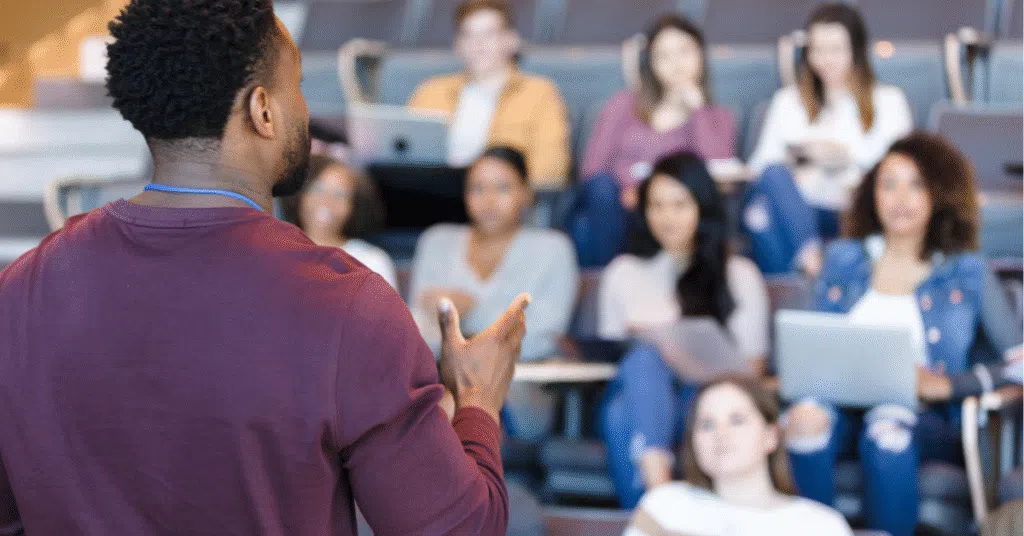Table of Contents
The Importance of Body Language in Communication

Body language communication is one of the most powerful tools we use every day. While words express our thoughts, gestures and nonverbal cues reveal emotions, confidence, and intent. This is why body language is important in both personal and professional interactions—it strengthens trust and helps people understand what words alone may fail to convey.
Gestures and Nonverbal Cues in Everyday Life
Body language gestures such as posture, hand movements, and eye contact play a central role in how others perceive us. Even when we stay silent, our bodies are constantly sending signals. Common examples include:
- Hand gestures that emphasize a message or show openness.
- Facial expressions that reveal emotions such as joy, frustration, or empathy.
- Mirroring body language that builds emotional connection and trust.
- Distracting gestures (like fidgeting or crossing arms) that may weaken a message.
How Facial Expressions Reveal Emotions

Facial expressions are one of the most powerful forms of nonverbal communication because they transcend cultural and language barriers. A genuine smile often conveys warmth, openness, and friendliness, while raised eyebrows can indicate curiosity, disbelief, or surprise. Similarly, a furrowed brow may signal confusion, stress, or concentration. These subtle cues often reveal emotions that words may try to hide. For example, someone might say they are fine, but their tense jaw or downturned lips could suggest otherwise. Learning to observe and interpret these facial signals allows us to better understand people’s true feelings and respond with empathy. This ability is particularly important in professional settings, negotiations, and personal relationships where trust and understanding play a critical role.
Body Language and Emotional Intelligence
Emotional intelligence goes hand in hand with body language. It’s not only about managing and expressing your own emotions but also about recognizing the unspoken signals in others. By being aware of your body gestures—such as maintaining an upright posture, keeping your movements calm, and using open hand gestures—you project confidence and sincerity. Likewise, being able to detect when someone is anxious, disengaged, or enthusiastic through their gestures builds deeper empathy. Emotional intelligence can be strengthened through body awareness techniques like practicing steady breathing, maintaining relaxed shoulders, and being conscious of micro-expressions during conversations. These practices not only help you communicate more effectively but also create a strong presence that makes others feel heard and valued.
Nonverbal Communication in Relationships
Nonverbal communication is at the heart of human connection, often influencing how relationships are built, maintained, or broken. A simple gesture such as leaning slightly forward when someone is speaking demonstrates attentiveness and respect, while consistent eye contact conveys sincerity and trustworthiness. On the other hand, crossed arms, distracted gestures, or avoiding eye contact may unintentionally signal disinterest or defensiveness. In romantic, professional, and even casual relationships, nonverbal cues often carry more weight than spoken words. When body language aligns with verbal communication, it strengthens trust and authenticity. Developing awareness of these cues not only enhances communication but also helps avoid misunderstandings, making interactions more meaningful and emotionally supportive.
Body Language Tips for Public Speaking
For leaders, presenters, and professionals, gestures are a tool to keep audiences engaged. Effective gestures in presentations make a message memorable, while distracting gestures can confuse listeners. Here are some tips:
- Use open hand gestures to appear approachable.
- Maintain eye contact to build trust and confidence.
- Avoid crossing arms or fidgeting, which can signal nervousness.
- Smile naturally to create warmth and connection.
Related: Body Gestures Examples in Public Speaking for Better Audience Engagement
The Science of Body Language and Communication
Research shows that body language nonverbal communication can carry more weight than spoken words. In fact, studies suggest that a significant portion of communication is nonverbal. This explains why actions often speak louder than words and why mastering body presence is key to effective communication.
FAQs About Body Language
- What are some reasons why actions speak louder than words?
Actions and gestures provide a direct, authentic reflection of inner feelings. While words can be rehearsed, nonverbal communication like tone, eye contact, or hand movements usually expresses genuine emotions.
- Is “your body language speaks louder than your words” true or false?
- It’s true. Inconsistent words and gestures create confusion, but when body language aligns with speech, it reinforces trust and credibility.
- Why is body language so powerful?
- Body language is powerful because it crosses language barriers. A frown, smile, or crossed arms are universally understood cues, making nonverbal signals an essential tool in human connection.
- What is confident body language when talking to someone?
- Confident body language includes maintaining eye contact, standing tall with relaxed shoulders, using purposeful hand gestures, and avoiding fidgeting. These signals demonstrate self-assurance and credibility.
Related: 10 Powerful Body Language Examples and What They Mean
Conclusion
Body gestures are more than subtle movements—they are a universal language that communicates trust, confidence, and connection. By becoming mindful of how we use and interpret body language, we can improve relationships, strengthen emotional intelligence, and deliver messages that truly resonate.
Have you ever relied on body language to connect when words weren’t enough? Share your experiences in the comments—we’d love to hear how nonverbal communication has helped you build understanding across languages and cultures.


